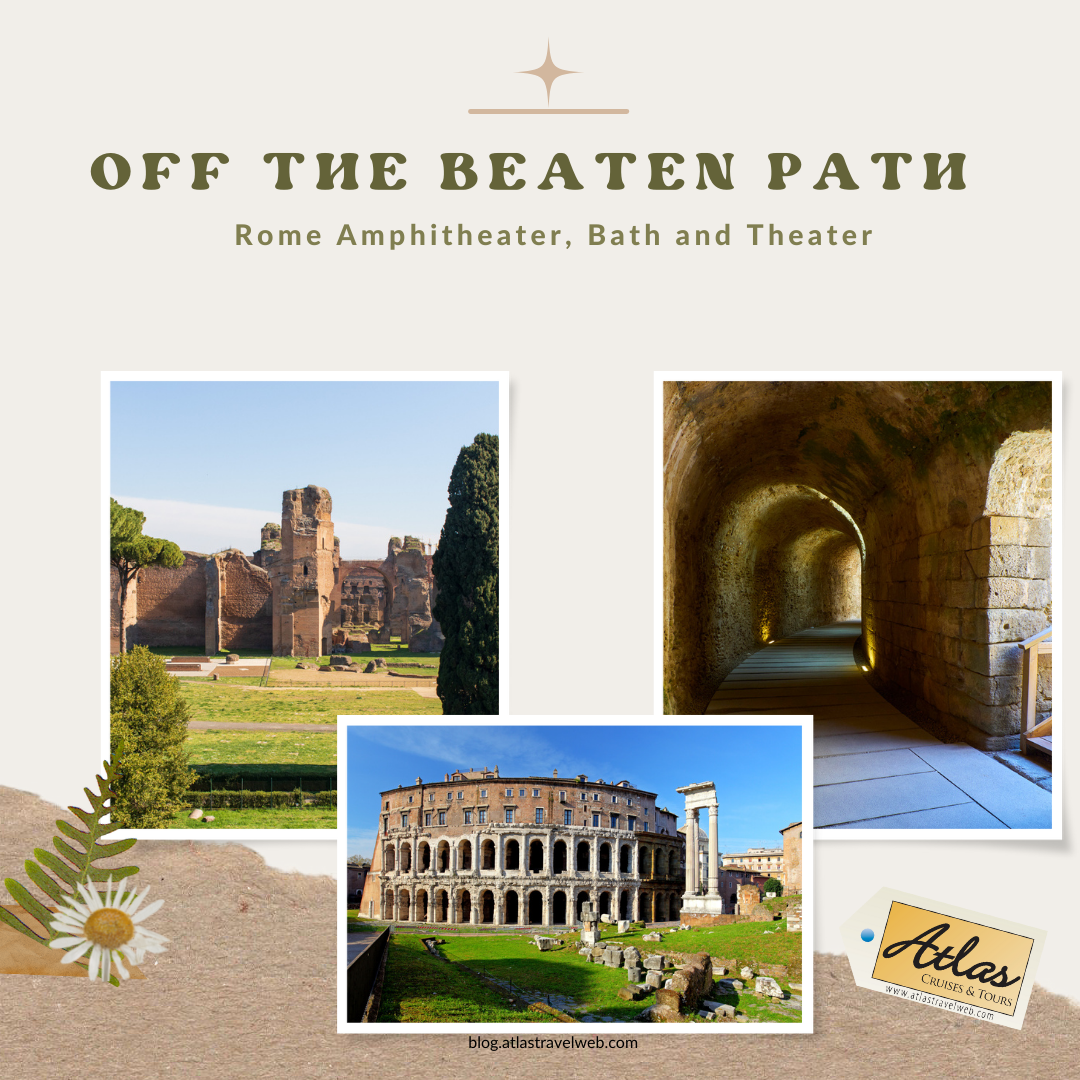When sightseeing in Rome, the iconic archeological and cultural monuments are a must-see. Off the Beaten Path : Rome Gardens & Parks
Teatro Marcello
Teatro Marcello is a lovely subject for any photography enthusiast, easily incorporated in a walking tour of Rome. The classic Roman amphitheater was inaugurated in 12 BCE, at the end of the Roman Republican era and more than 90 years before the Colosseum.
During the Renaissance, the Theatre of Marcellus was transformed into a dwelling. A palazzo was built on top of the theatre. Today, the once private residence of the noble Orsini family houses exclusive apartments for the well-to-do in Rome.
Cripta Balbi
Cripta Balbi (Theatre of Balbus) – an extraordinary example of urban archeology, a specialized branch of science that examines the history left by the long-term habitation of cities. This site is the remains of an entire Roman street that presents a unique view of life 2000 years ago. The site where the museum stands was, in Ancient times, the courtyard (crypta) of the theatre built by Lucius Balbus, which had about 11,000 spectators. Patrons of the theatre would stroll in this courtyard and pause for refreshment between the acts of a show, as is now done in a theatre’s foyer. Crypta Balbi is one of a small number of museums in the world that can boast of its origins as a planned research activity involving all fields of knowledge.
Baths of Caracalla
Baths of Caracalla is a spectacular, sprawling thermal complex dating back to the early 3rd Century CE. The complex was comprised of pools of varying temperatures as well as areas for exercise, relaxation, refreshment and socializing. Today the ruins make an impression due to their sheer vastness and magnitude, with some of the walls extending skyward up to 30 meters. The unusual thing about the Baths of Caracalla is that you can tour it with a virtual reality visor. With this high-tech headgear, you can experience the splendor of the complex as it was almost 2000 years ago.








